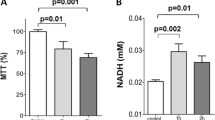Abstact
Organic fuel smoke is a hazardous agent, which pushes the cells towards“prooxidant state'', leading to 4,46,400 strand breaks/cell/day as against 47,000 strand breaks/cell/day produced by constitutive oxygen radicals. This prooxidants scenario switches on a plethora of intercellular events. Here we report a novel DNA damaging factor released by lymphocytes, upon treatment with smoke condensate. Human lymphocytes, when exposed to cow dung cake smoke condensate, were found to release a low molecular weight factor into the media at 20 min of exposure. The conditioned media, displayed a propensity of inducing DNA damage in fresh, normal lymphocytes, which were not exposed to any damaging agent. The above DNA damaging effect of the conditioned media was not due to any residual presence of Polycyclic Aromatic Hydrocarbons, which were present in the smoke. The release of this factor was in correlation with the DNA damaging event, taking place in the cells. This secondary DNA damaging factor had a molecular weight less than 5 kd. The factor had the cell death inducing propensity when allowed to act on lymphocytes
Similar content being viewed by others
Abbreviations
- CAT:
-
catalase
- COX:
-
cyclooxygenase
- CSC:
-
cigarette smoke condensate
- DMSO:
-
dimethyl sulfoxide
- EGTA:
-
ethylene glycol (bis ethyl ether) tetra acetic acid
- FADU:
-
fluorimetric analysis of DNA unwinding
- HBSS:
-
Hank's balanced salt solution
- Kd:
-
kilo daltons
- PAH:
-
polycyclic aromatic hydrocarbons
- PBS:
-
phosphate buffered saline
- ROS:
-
reactive oxygen species
- SOD:
-
superoxide dismutase
- TLCK:
-
tosyl lysyl chloromethyl ketone
References
Poirier MC: Chemical-induced DNA damage And human cancer risk. Nat Rev Cancer 4: 630–637, 2004
Chang CL, Marra G, Chauhan DP, Ha HT, Chang DK, Ricciardiello L, Randolph A, Carethers JM, Boland CR: Oxidative stress inactivates the human DNA mismatch repair system. AJP-Cell Physiology 283: C148–C154, 2002
Asami S, Hirano T Yamaguchi R, Tomioka Y, Itoh H, Kasai H: Increase of a type of oxidative DNA damage, 8-hydroxyguanine, and its repair activity in human leukocytes by cigarette smoking. Cancer Res 56: 2546–2549, 1996
Shalini VK, Srinivas L: Fuel smoke condensate induced DNA damage in human lymphocytes and protection by Turmeric (Curcuma longa) Mol Cell Biochem 95: 21–30, 1990
Nakayama T, Kaneko M, Nagata C: Cigarette smoke induces DNA strandbreaks in human cells. Nature 314: 462–464, 1985
Dabestani R, Ivanov IN: A comparative physical, spectroscopic and photophysical properties of Polycyclic Aromatic Hydrocarbons. Photochem Photobiol 70: 10–34, 1999
Emerit I, Cerutti PA: Tumor promoter Phorbol 12-myristate 13-acetate induces a clastogenic factor in human lymphocytes. Proc Natl Acad Sci USA 79: 7509–7513, 1982
Yan Z, Subbaramaiah K, Camilli T, Zhang F, Tanabe T, McCaffrey TA, Dannenberg AJ, Weksler BB: Benzo[a]pyrene induces the transcription of cyclooxygenase-2 in vascular smooth muscle cells. Evidence for the involvement of extracellular signal-regulated kinase and NF-kappaB. J Biol Chem 275: 4949–4955, 2000
Shalini VK, Luthra M, Srinivas L, Rao SH, Basti, Reddy SM, Balasubramanian D: Oxidative damage to the eye lens caused by cigarette smoke and fuel smoke condensates. Indian J Biochem Biophys 31: 261–266, 1994
Brown DG, Sun XM, Cohen GM: Dexamethasone-induced apoptosis involves cleavage of DNA to large fragments prior to internucleosomal fragmentation. J Biol Chem 268: 3037–3039, 1993
Srinivas L, Shalini VK, Shylaja M: Turmerin a water soluble antioxidant peptide from Turmeric [Curcuma longa]. Arch Biochem Biophys 292: 617–623, 1992
Srinivas L, Shalini VK: DNA damage by smoke: protection by Turmeric and other inhibitors of ROS. Free Radic Biol Med 11: 277–283, 1991
Russo P, Kalkkinen N, Sareneva H, Paakkola J, Makarow M: A heat shock gene from Saccharomces cervisae encoding a secretory glycoprotein. Proc Natl Acad Sci USA 89: 3671–3675, 1992
Tsiomenko B, Plekhanov PG, Tuymetova GP, Kononova SV: Secretory heat shock protein of thermotolerant Yeast Hansenula polymorpha: Identification and comparative characteristics. Biochemistry (Mosc) 62: 123–128, 1997
Emerit I, Garban F, Vassy J, Levy A, Filipe P, Freitas P: Superoxide mediated clastogenesis and anticlastogenic effects of exogenous superoxide dismutase. Proc Natl Acad Sci USA 93: 12799–12804, 1996
Emerit I, Serejo F, Fillpe P, Alaoul Yousefl A, Fernandes A, Costa A, Freitas J, ramalho F, Baptista A, Carneiro de Moura M: Clastogenic factors as biomarkers of oxidative stress in chronic hepatitis C. Digestion 62: 200–207, 2000
Emerit I: Detection of Clastogenic factors in oxidative stress-associated diseases. Usefulness of this assay for evaluation of Antioxidants (1). Cejoem 4: 3–10, 1998
Birn Boim HC: Fluorimetric analysis of DNA unwinding to study strandbreaks and repair in mammalian cells. Methods Enzymol 186: 550–555, 1990
Author information
Authors and Affiliations
Corresponding author
Rights and permissions
About this article
Cite this article
Rao, R.P., Gowda, S.S.T. & Leela, S. Smoke treatment triggers the release of a novel DNA damaging factor by lymphocytes. Mol Cell Biochem 284, 73–79 (2006). https://doi.org/10.1007/s11010-005-9015-4
Received:
Accepted:
Published:
Issue Date:
DOI: https://doi.org/10.1007/s11010-005-9015-4




